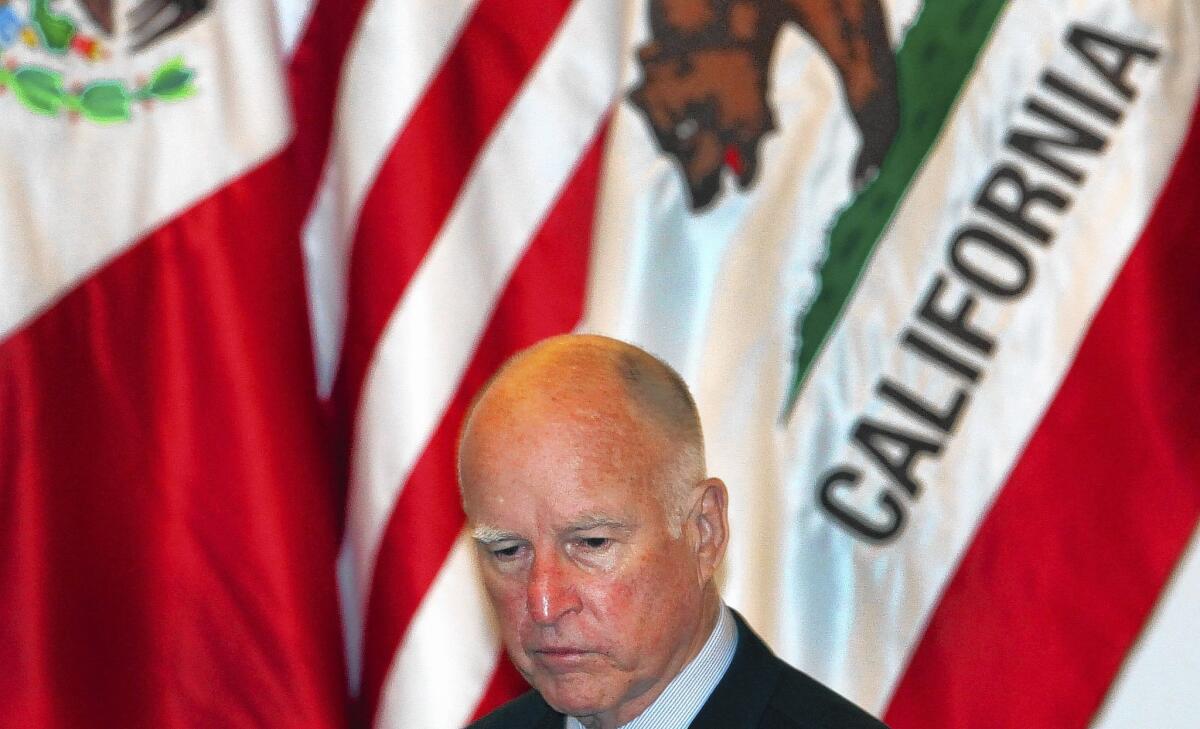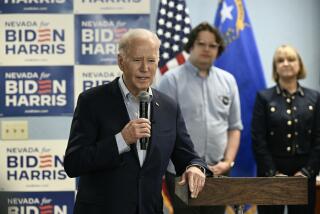Officials explore Mexico business prospects with help from Gov. Brown

When the average Mexican family visits California, they probably hop in a car for a jaunt across the border. But California tourism officials who traveled here with Gov. Jerry Brown this week have their sights set on a more high-flying clientele.
They want visitors boarding planes to destinations such as San Francisco, cruising through Napa vineyards in rental cars and skiing the slopes at Lake Tahoe.
To increase the number of airborne tourists, California officials Monday signed an agreement with Aeromexico, the country’s largest airline, to mount a $400,000 advertising campaign for Golden State vacations.
The pact, which will build on $1 million in television advertisements aired earlier this year, was one of several efforts to boost business in California made during Brown’s four-day trip, which ended Wednesday.
The visit included a high-profile effort by the governor to enlist Mexico in the global fight against climate change. And Brown won plaudits from politicians and commentators here for striking a conciliatory stance toward Central American migrants who recently have surged across the border into the United States.
But for the scores of business representatives and lobbyists who traveled with the governor — and paid for his trip — a highlight was the chance to explore new opportunities for their companies and clients.
Although much of Mexico remains mired in poverty and economic growth lags behind the goals set by its leaders, California businesses and government officials still see dollar signs south of the border.
On Wednesday morning, Brown signed an agreement with Mexico’s economic minister pledging to increase trade in areas such as manufacturing, agriculture and biotechnology. The governor’s transportation secretary, Brian Kelly, inked a deal to advance the development of a new border crossing in San Diego County.
Christopher Wilson, a senior associate at the Wilson Center, a Washington think tank, said Mexico’s growing middle class has begun to change the country’s reputation as a poor place that provides cheap labor.
“The Mexican economy is transforming,” Wilson said. “There are lots of opportunities for the United States to tap into.”
Those who traveled with Brown want to sell much more than California vacations. Opportunities for them in Mexico could include developing solar power plants or putting more raisins in supermarkets.
“More of Mexico can afford raisins [from California],” said Chris Rosander, who handles international marketing for the Raisin Administrative Committee, an industry organization in Fresno. “It’s a higher quality raisin.”
For Rosander and others, it’s not the heavily scripted events with Brown and foreign officials that make such a trip worthwhile. On Sunday, Rosander joined other members of the agricultural industry to tour warehouses, supermarkets and local businesses to learn more about the Mexican market.
Of course Brown’s presence, he said, facilitates activities here that can foster money-making opportunities. The governor outlined such a goal last week in Sacramento.
“The business of buying and selling is not the business of government,” Brown told reporters. “Our job is to open doors.”
Brown opposed the North American Free Trade Agreement during his presidential campaign in 1992, fearing it would erode protections for workers and the environment. But before embarking on this week’s trip, Brown told reporters he was “not prepared to give an evaluation” of the agreement’s impact.
An oft-mentioned issue this week was the long wait times at the congested border between California and Mexico, where commercial trucks can often end up idling for hours. The delays cost business $7.2 billion annually, according to the San Diego Assn. of Governments.
“It takes three hours to go from Tijuana to San Diego,” Brown said Sunday at a reception for those traveling with him. “If we can put a man on the moon, can’t we move someone from Tijuana to San Diego in 15 minutes?”
With little support coming from the federal government for a new border crossing, Californian and Mexican officials have pressed forward on their own, and legislation in Sacramento has authorized a new toll road to fund the proposed station.
The agreement signed Wednesday creates a new committee, including representatives from California and Mexico, to pursue the matter further.
Mexico has struggled to shake its reputation for violence fueled by the drug trade, and its leaders are trying to portray the country as ready for more foreign investment and trade in areas such as renewable energy.
“So much of the news in the United States is dominated by the dangers [in Mexico],” said Rusty Areias, a top lobbyist at California Strategies. “The subplot is, there’s a remarkable economy down here.”
chris.megerian@latimes.com
Twitter: @chrismegerian
More to Read
Start your day right
Sign up for Essential California for news, features and recommendations from the L.A. Times and beyond in your inbox six days a week.
You may occasionally receive promotional content from the Los Angeles Times.







